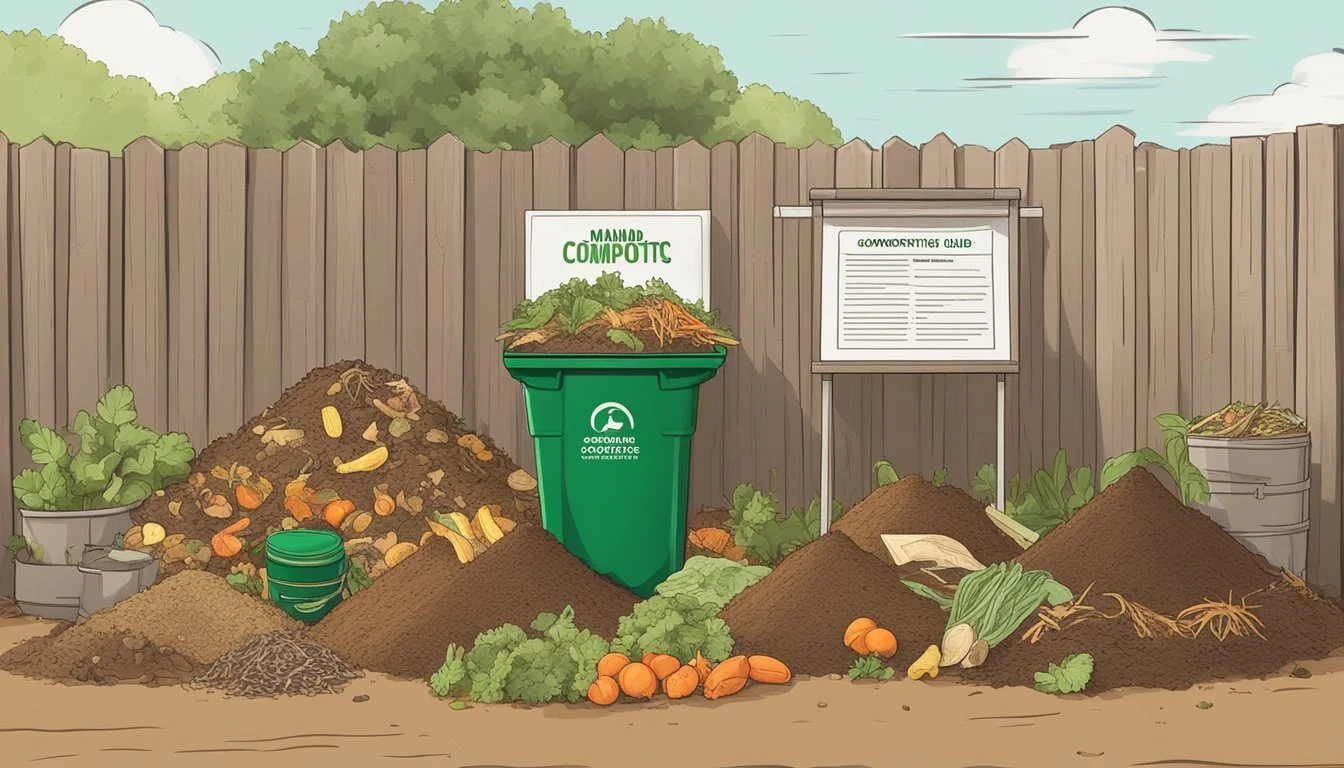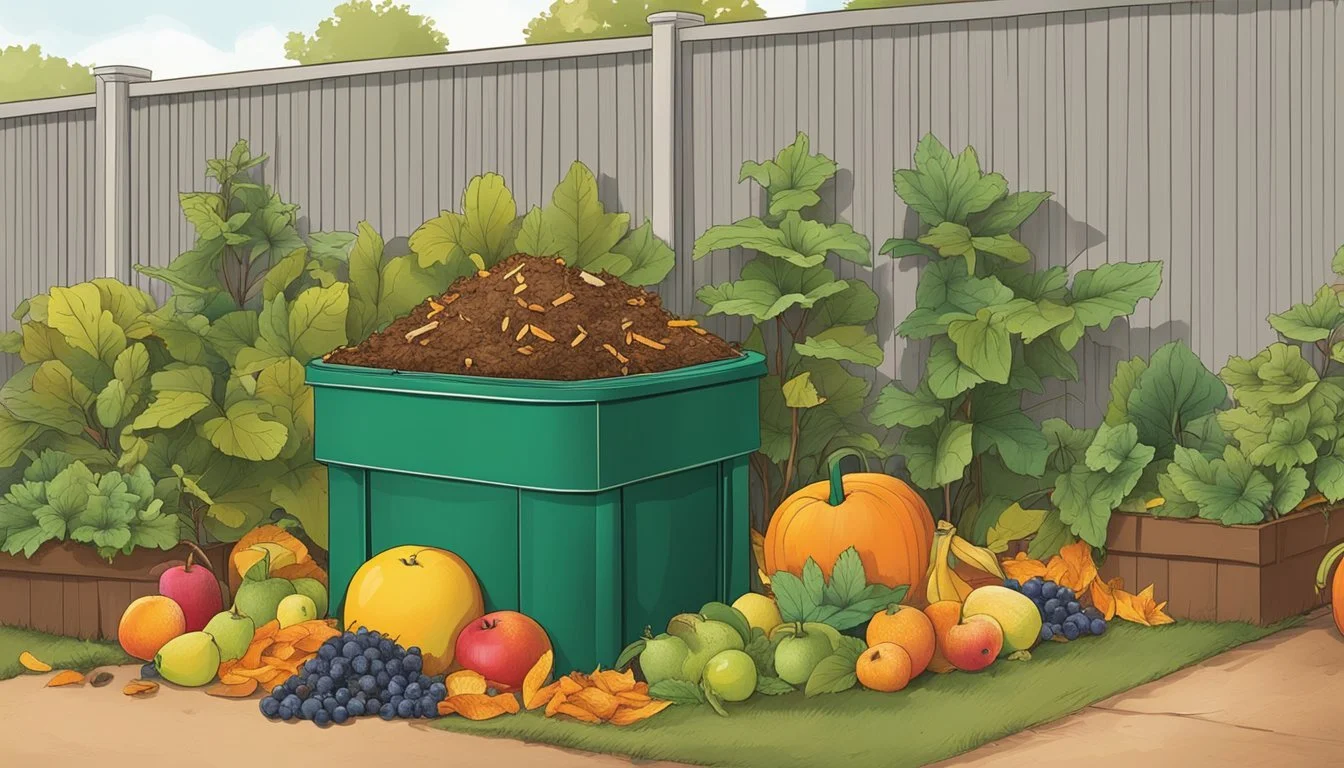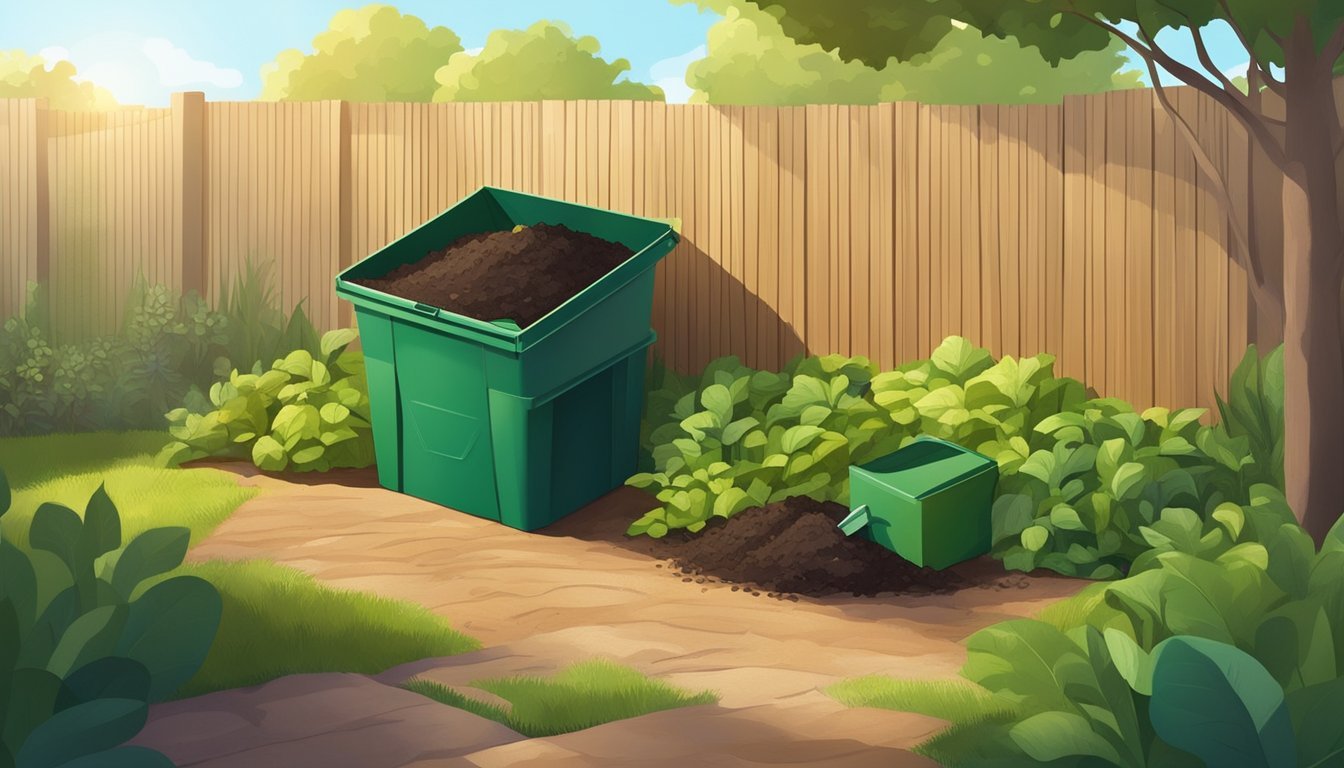Guide to Composting in Midland, TX
Effective Strategies for Local Residents
Composting is a natural process that turns organic waste into nutrient-rich soil, often referred to as "black gold" by gardeners for its ability to enhance plant growth. In Midland, Texas, the arid climate and soil composition present unique challenges for gardeners and landscapers. However, by integrating compost into the soil, residents can improve moisture retention and soil health, paving the way for more successful and sustainable gardening practices.
The principles of composting are universal, but the practice can vary depending on the local environment. In the heart of West Texas, Keep Midland Beautiful provides resources on composting, offering residents information on how to start and maintain a composting system tailored for the Midland area. Encouraging composting at home reduces landfill waste and serves the dual purpose of waste management and soil improvement, aligning with the organization's goal of maintaining a clean and beautiful community.
Midland's commitment to sustainability is evident in the facilities and services provided for waste management and recycling. The city’s landfill and the available recycling locations ensure that residents have options to responsibly discard waste. Composting at home complements these efforts, turning everyday organic waste like leaves, food scraps, and yard trimmings into a valuable resource for the city's green spaces and home gardens.
Composting Basics
Composting in Midland, Texas, is a simple, yet impactful way to enhance soil health by converting organic matter into a valuable amendment. This section covers the essentials you need to know about composting, including its definition, the benefits it brings to your garden, and the critical ingredients required for successful decomposition.
What Is Composting?
Composting is a natural process where organic matter decomposes into a rich soil additive known as compost. The transformation is facilitated by microorganisms, insects, and fungi which break down the matter in the presence of adequate moisture and air. This creates an environment where nutrients within the waste are recycled into humus, a stable form of organic matter that enriches soil.
Benefits of Composting
Composting has multifaceted benefits:
Soil Condition Improvement: Compost introduces essential nutrients and organic matter into soil, enhancing its structure, moisture retention, and aeration.
Waste Reduction: By turning yard and kitchen waste into compost, one reduces the amount of waste sent to landfills.
Environmental Health: Composting reduces methane emissions from landfills and minimizes the reliance on chemical fertilizers, contributing to a healthier ecosystem.
Composting Ingredients
The right balance of ingredients is crucial for efficient composting:
Greens for Nitrogen: Includes materials such as fruit and vegetable scraps, coffee grounds, and fresh grass clippings, providing the nitrogen essential for microbial growth.
Browns for Carbon: Materials like dry leaves, straw, and wood chips supply the crucial carbon that serves as the energy source for decomposers.
Balance: A general ratio of 1 part green (nitrogen) to 30 parts brown (carbon) is recommended for optimal decomposition.
Air and Moisture: Regular turning of the compost pile introduces air, vital for aerobic decomposition, and maintaining the pile's moisture akin to a wrung-out sponge encourages microbial activity.
Setting Up Your Compost Pile
Setting up a compost pile in Midland, TX, involves careful selection of location, understanding the optimal composition, and balancing green and brown materials. Proper setup is essential for a functional and efficient composting process.
Choosing a Location
Selecting an ideal location for a compost pile is the first critical step. The site should be on level ground to facilitate proper drainage and prevent water pooling. It needs to be accessible for adding materials and turning the pile, yet out of direct sight if preferred. For Midland residents, the Keep Midland Beautiful organization recommends finding a spot that combines convenience with aesthetics.
Compost Pile Composition
A compost pile should be composed of alternating layers of green and brown materials to create an environment conducive to decomposition. Greens include kitchen scraps and grass clippings, which provide nitrogen. Browns consist of dry leaves, twigs, and cardboard, and they supply carbon. Additionally, each layer of greens and browns should be followed by a thin layer of soil to introduce microorganisms essential for the composting process. The Old Farmer’s Almanac suggests maintaining moisture like a damp sponge and ensuring proper aeration for faster decomposition.
Balancing Greens and Browns
The balance between greens and browns is crucial for a healthy compost pile. They're often recommended at a ratio of about 1:3 (green to brown), according to a guide from Planet Natural. Greens, which are nitrogen-rich, should not overwhelm the pile, as this can lead to odors and a slower composting process. Browns, on the other hand, are carbon-rich and help to bulk up the pile, allowing for necessary airflow and structure. For Midland's climate, balancing these materials properly can mean the difference between a smelly pile and rich compost.
Maintaining Your Compost
Proper maintenance is key to successful composting. It involves ensuring the compost pile is adequately aerated, has the correct moisture level, and is kept at an optimal temperature for decomposition.
Aeration and Turning
Aeration is critical for supplying the compost pile with the oxygen needed for microbes to break down organic matter. One should turn the pile every few weeks using a pitchfork or a compost aeration tool to introduce oxygen throughout the material. This prevents the pile from becoming too dense and allows for more efficient decomposition.
Moisture and Temperature Control
The pile should be kept moist, like a wrung-out sponge, to support the composting process. If the compost is too dry, it's advisable to add water until the desired moisture level is achieved. Conversely, if the compost is too wet, one can add dry, brown materials to absorb excess moisture. The temperature of the pile is an excellent indicator of activity within; a healthy compost pile will generate heat and ideally maintain a temperature between 90 to 140 degrees Fahrenheit.
Troubleshooting Common Issues
Common issues in composting include unpleasant odors, pests, and a pile that doesn't heat up. If a compost pile smells, it's usually because it's too wet or lacks oxygen; turning the pile and adding brown materials can resolve this. Pests are attracted to food scraps, so it's important to cover fresh additions with a layer of soil or dry material to discourage them. If the pile isn't heating up, it may need more green materials to increase nitrogen content, which fuels the decomposers at work.
Utilizing Finished Compost
When incorporating finished compost into a gardening regimen, it's essential to know when compost is ready for use and the appropriate methods for its application. This ensures plants receive the full spectrum of benefits from this nutrient-rich soil amendment.
When Is Compost Ready?
Compost is considered ready when it has turned into a dark, crumbly, and earthy-smelling material. It should no longer heat up, and its original ingredients should be unrecognizable. A simple test to determine compost readiness is to place a sample in a sealed plastic bag for 24 to 48 hours; if it smells sour or rotten upon opening, it needs more time to mature.
How to Use Compost
To use compost in a garden, it can be spread as mulch over the soil or mixed directly into the soil as an amendment. When used as mulch, a layer of about 2-3 inches should be applied around plants. This will help retain moisture and suppress weeds. As a soil amendment, compost should be mixed into the top 6-8 inches of the garden bed before planting, fostering a rich, nourishing environment for root growth.
Special Composting Techniques
In the pursuit of sustainable waste management, specialized composting methods can optimize organic waste breakdown, even within the constraints of urban living. Employing specific techniques such as vermicomposting and adapting the composting process for smaller living spaces helps Midland residents contribute to a greener community.
Vermicomposting
Vermicomposting, or worm composting, uses the natural digestion process of certain earthworm species to convert organic waste into nutrient-rich compost. Red wigglers are the commonly chosen worms for this method due to their adaptability and voracious appetite. Residents in Midland can set up vermicomposting systems in bins, which require minimal space and are ideal for indoor use. The key is maintaining a proper balance of worms to waste material and ensuring adequate moisture and aeration for the worms to thrive.
Composting in Small Spaces
Composting isn't exclusive to those with ample outdoor space. Apartment dwellers in Midland can also practice composting by using compact bins designed for small spaces. One can utilize bokashi composting, where microorganisms break down the waste in a sealed container, or a mini compost tumbler which can fit into tiny areas. Community gardens in Midland also sometimes offer composting services or shared space, allowing individuals to partake in composting without having to manage the composting process at home. Embracing these tailored methods enables everyone to contribute to Midland's waste reduction, regardless of their living situation.
Composting Guidelines and Regulations
In Midland, TX, composting is not just an eco-friendly practice but also a regulated activity. Adhering to local regulations and practicing safe composting are essential for contributing to a sustainable community and reducing landfill waste.
City of Midland Regulations
The City of Midland provides specific guidelines for residents who wish to compost. One must be aware that yard waste disposal, if not composted, should be taken to the designated disposal area located at the Citizens Collection Station. This helps alleviate the overfilling of neighborhood dumpsters and is in accordance with the city's efforts to manage organic waste effectively. Residents are encouraged to divert compostable materials from the municipal waste stream, as doing so can lead to a significant reduction in the amount of waste sent to landfills.
Safe Composting Practices
When composting in Midland, one must avoid including meat, bones, and dairy products to prevent attracting pests. These materials can attract rodents and insects, and can also lead to unpleasant odors. Instead, composting should focus on organic, plant-based materials. It's also crucial to maintain the right balance between green and brown materials and to ensure adequate aeration and moisture to promote decomposition without nuisance or health hazards. Community composting initiatives can serve as resources for best practices and collaborative efforts in waste reduction.
Environmental Impact
Composting in Midland, Texas has a targeted impact on the environment, particularly in the areas of waste reduction and soil management. By understanding how this process interacts with local eco-dynamics, one can appreciate its benefits on a granular level.
Composting and Waste Reduction
Composting significantly reduces the amount of organic waste that ends up in landfills. In Midland, organic materials such as leaves, grass clippings, and food scraps are transformed into nutrient-rich soil amendments through composting. This not only recycles natural resources but also decreases methane emissions from decomposing waste, a potent greenhouse gas contributing to climate change.
Keep Midland Beautiful offers insights on how composting can lessen soil erosion, highlighting the fusion of recycling efforts with environmental stewardship.
Composting and Its Effect on Erosion
The application of compost can improve soil structure and health. In Midland, the practice of adding compost to the land has the added benefit of protecting against erosion. With better soil texture and increased organic matter from compost, water infiltration is enhanced and runoff is reduced, thereby preventing soil erosion. Moreover, the use of compost can reduce reliance on chemical fertilizers, further improving environmental outcomes.
Further Resources
For residents looking to expand their composting knowledge or to connect with local composting enthusiasts, Midland offers ample resources. These include educational materials for beginners and experts alike, as well as active communities that collaborate on composting and recycling initiatives.
Educational Materials
Keep Midland Beautiful provides an assortment of guides and informational resources aimed at enhancing composting practices. Whether one is a beginner looking to start backyard composting or a seasoned gardener seeking to improve soil nutrition, there are materials available to assist. Detailed information on the benefits of composting, such as reducing soil erosion and improving soil structure can be found at Composting - Nature's Way To Recycle.
For those interested in the technical aspects of composting, such as collection methods and controlling odors, the guide titled "Growing Local Fertility: A Guide to Community Composting" is a valuable resource. One can access this comprehensive material and learn about various composting systems at Growing Local Fertility.
Local Composting Communities
Composting enthusiasts in Midland are invited to join local groups that focus on promoting recycling and composting in the city. These groups often work closely with the City of Midland and other non-profit organizations, like Keep Midland Beautiful. Such collaborations are instrumental in city-wide beautification and waste management efforts. Information about group activities, volunteer opportunities, and educational events can be found on the Keep Midland Beautiful Home page.
Together, these educational materials provided by reputable sources and the supportive composting communities make a significant impact in driving the city's green initiatives forward. By tapping into these resources, individuals can contribute to a sustainable future for Midland and its environments.
Frequently Asked Questions
What is composting?
Composting is a natural process that transforms organic waste into a nutrient-rich soil amendment known as compost. By fostering the breakdown of organic materials, such as kitchen scraps and yard waste, individuals can create compost that beneficently contributes to soil structure and plant health.
How does compost benefit the soil in Midland, TX?
Compost enriches the soil with essential nutrients, improves its structure, and enhances its ability to retain water. Utilization of compost ultimately leads to healthier and more resilient plant life in the semi-arid climate of Midland.
What can be composted?
Green materials: These include fruit and vegetable scraps, coffee grounds, and grass clippings, which provide nitrogen. Brown materials: Examples are leaves, branches, and cardboard, which offer carbon.
Note: A balance between greens and browns is crucial for effective composting.
How much water should be added to compost?
The compost pile should be kept as moist as a wrung-out sponge. Too much water can suffocate microorganisms, while too little can halt the decomposition process.
Can composting reduce waste in Midland?
Yes, composting can significantly decrease the volume of waste sent to landfills by converting organic waste back into a useful product for the environment.
Where can residents find composting resources in Midland?
Residents can visit Keep Midland Beautiful for information on composting and waste management in the community.
Glossary of Composting Terms
Compost: The end product of the decomposition process where organic materials are broken down into a soil-like substance. It improves soil structure, provides nutrients, and enhances the ability of plants to absorb more nutrients from the soil.
Green Materials: These refer to nitrogen-rich organic waste, such as grass clippings and vegetable scraps. They are essential in the composting process for providing the necessary nitrogen to feed decomposing bacteria.
Brown Materials: Carbon-rich substances in the compost pile, including materials such as dry leaves, straw, and wood chips. Their role is to balance the nitrogen in greens and to add bulk to the compost, helping to maintain the pile’s structure and air flow.
Organic Materials: Substances that come from living organisms. In the context of composting, they are biodegradable materials such as leaves, yard trimmings, fruit scraps, and coffee grounds.
Nutrients: Elements that plants need to grow. Compost provides these in a slow-release form that is beneficial for plant health and growth, including nitrogen, phosphorus, and potassium.
Term Definition Activator A substance that accelerates the decomposition process, basically "kick-starting" the composting process. Aeration The process of adding oxygen to the compost pile, typically by turning or mixing the materials, which is crucial for the survival of aerobic microorganisms that break down organic matter. Batch Mixer A tool or machine used for mixing materials for composting in specific quantities or "batches."











